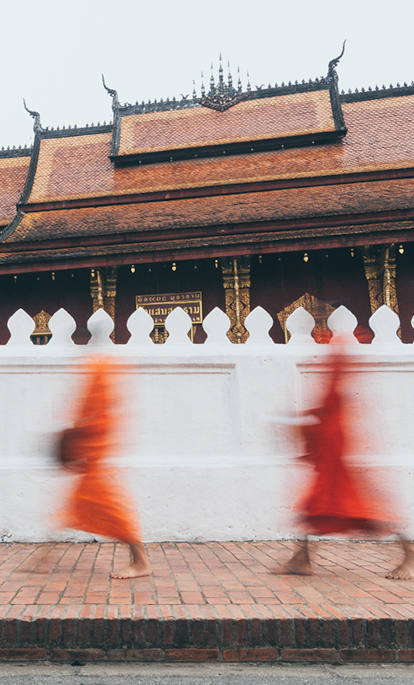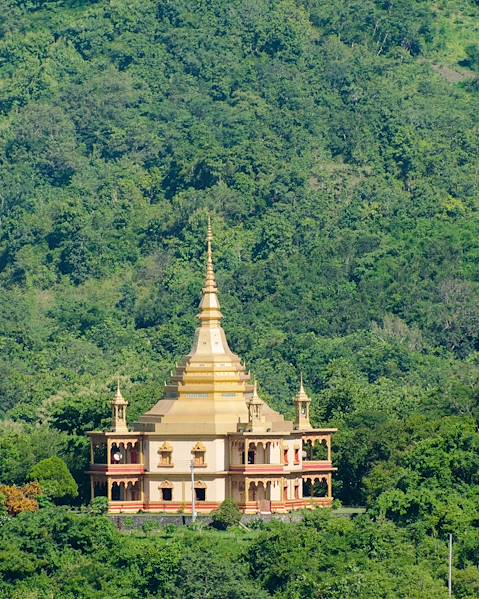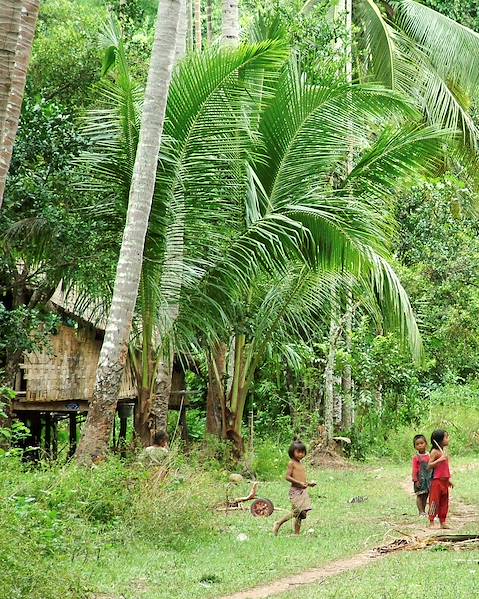Population
7.425 million (2021)
Official Language
Lao
Languages Spoken
While the official and most widely spoken language is Lao, which is a language of the Tai-Kadai language family, more than half the population speak other languages. These include Khmu (Austroasiatic) and Hmong (Hmong-Mien), which are typically spoken by those living in the midland and highland areas. Several Laotian sign languages are also used in areas with high rates of congenital deafness. French continues to be used in government and commerce and English is also becoming an increasingly popular language to study.
People
The people of Laos are often categorised by where they live — the lowlands, midlands or upper highlands — as this often loosely correlates with ethnic groupings. Over half the population is considered ethnic Lao and belong to the Tai linguistic group that began migrating south from China back in the first millennium CE. There are the Lao Theung, or mid-slope Laotians, who live in the central and southern mountains and account for around 30% of the population. There are also some Vietnamese, Laotian Chinese and Thai minorities, who mainly live in the towns — although many left after independence in the late 1940s, choosing to relocate either to Vietnam, Hong Kong or France. Meanwhile the Hill people and minority cultures of Laos — like the Hmong, Yao (Mien or Hmong-Mien), Dao, Shan, and several Tibeto-Burman speaking people — have lived in isolated regions of Laos for years. Collectively, they are known as Lao Soung or highland Laotians and account for about 10% of the population.
Religion
Over 60% of Laotians identify as Theravada Buddhist, 1.5% Christian, 0.1% Muslim, 0.1% Jewish, and 32.3% are other or traditional (mostly practitioners of Satsana Phi).
Holiday calendar
January 1st: International New Year’s Day
March 8th: International Women’s Day
April 14th and 15th: Lao New Year
May 2nd: International Labour Day
July 20th: Women's Union Establishment Day
October 7th: BOL Establishment Day (Banks Only)
October: Boat Racing Festival (Celebrates the end of Buddhist Lent), which takes place on the 15th day of the 11th lunar month, that usually means it falls in October.
November: That Luang Festival observed on the full moon in the twelfth lunar month (usually November).
December 2nd: National Day
Politics
The Lao PDR is one of the world's few socialist states which openly endorses communism. However, the only legal political party is the Lao People's Revolutionary Party (LPRP). Laos is a one-party state, where the General Secretary or party leader holds ultimate power and authority over both the state and the government, serving as the supreme leader. The government policies are determined by the party through the 11-member Politburo of the Lao People's Revolutionary Party and the 61-member Central Committee of the Lao People's Revolutionary Party.
Story
During the late 19th to the mid-20th century Laos was colonised by the French, leading to a huge European cultural influence, which intensified throughout the country’s during World War II. What followed was a period of unrest during the Indochina wars, as well as a civil war in the second half of the 20th century. It wasn’t until 1975 that Laos emerged from the turmoil, as a communist country under a Marxist-Leninist ideology. The late 20th and 21st century brought economic reformation, with a developing tourist industry that strengthened the country’s economy, a gradually shrinking debt and reduced dependence on international aid.
Etiquette
Laos is known for being a hospitable and friendly country, with a slow pace of life and easy-going attitude. Like any country though, it’s worth brushing up on the etiquette before you go. When visiting sacred sites and temples, modest attire should be adopted as a sign of respect. Ask permission before taking photographs of locals and remember that greetings are important, with many choosing to use the traditional ‘Nop’ gesture where hands are joined together in a praying gesture at chin level. Passing things should be done with the right hand (using the left hand is seen as taboo) and it is also generally forbidden for Buddhist monks to come into physical contact with women, so when passing things to a monk, it’s best to place the item on a surface. In Laos, the top of the head is considered the most important part of the human body, so touching someone on the top of their head is seen as both taboo and insensitive. And when it comes to tipping, it is not part of the Laos culture, meaning you aren’t required or expected to tip anywhere and if you try to give more money than the set price, you may be faced with some confused expressions.
Food
When it comes to cuisine, Laos can often be overlooked, with travellers favouring the delicacies of its Thai neighbour, but the country’s cuisine is packed with flavour and shouldn't be snubbed. Expect dishes featuring fermented meat and fish flavoured with herbs and chillies, plenty of night markets and eateries offering hearty dishes. Khao niew (aka sticky rice) is a staple, forming the basis of almost every meal, and it can be enjoyed with everything and anything, be it muu haeng, thinly-sliced pork (typically shoulder) or siin haeng thinly-sliced beef (typically a tough cut) marinated in fish sauce, black soy sauce, oyster sauce, chopped coriander, lemongrass, garlic, ginger and galangal. And on the side? Tam muk muang (green mango salad) or laab ped (minced duck salad). For those on the go, the Laos snack favourite found in many a street market is piing hua jai kai (grilled chicken hearts) that are again marinated overnight for a flavour-packed morsel of deliciousness.
Drink
When it comes to drinking water in Laos, you can get bottled and purified water easily from most stores and supermarkets; tap water should always be avoided unless you boil it beforehand. For those looking to sample some of Laos’ alcoholic tipples, try lao lao, also known as Lao rice whisky, which is largely considered the national drink and should be gulped with caution as it’s rather strong. Beer lovers will enjoy cracking open a cold one and sipping beerlao, made from Jasmine rice that is grown in the local area of Laos and produced by the Lao Brewery Company. Lao coffee is also considered to be one of the best in the world, as it grows in the Bolaven Plateau – the ‘Golden Land’ for coffee in southern region of the country.
















